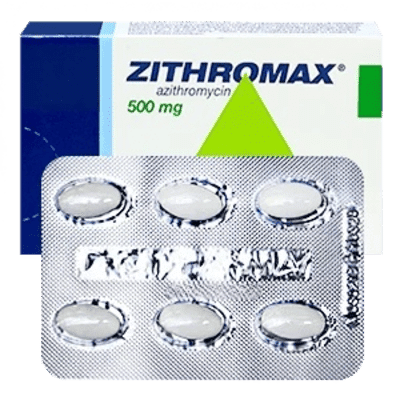The drug helped me cope with acne, which for a long time did not respond to treatment with other means. The effect is noticeable after a few weeks, although the first days of taking it were difficult due to slight nausea. Overall, I am happy with the result.

Tetracycline
Active ingredients: Tetracycline- Quality products
- Support 24/7
- Fast delivery
What is it?
Tetracycline is an antibiotic that belongs to the tetracycline group. It is used to treat various bacterial infections. Tetracycline is effective against a wide range of microorganisms, including both gram-positive and gram-negative bacteria. The main action of this drug is to suppress the synthesis of proteins in bacterial cells, which prevents their reproduction and leads to the destruction of the infection.
Tetracycline is often prescribed for diseases such as acne, respiratory tract infections, genitourinary system, as well as skin and soft tissue infections. This drug is well studied and has been widely used in medical practice for many decades. However, it should be remembered that to achieve maximum effectiveness, tetracycline should be used strictly as prescribed by a doctor, taking into account possible contraindications and side effects.
Composition
Tetracycline is available in various forms, including tablets, capsules, ointments, and solutions for internal or external use. The main active ingredient that provides the antibacterial effect is tetracycline hydrochloride. This substance penetrates into bacterial cells and blocks protein synthesis, which prevents their growth and reproduction.
In addition to the main component, the composition of the drugs may also include excipients, which depend on the form of release:
- Talc and magnesium stearate - used in tablets and capsules to improve sliding and uniform distribution of the active substance.
- Starch - added to tablets to give shape and facilitate the disintegration of the tablet in the body.
- Vaseline or lanolin - used in ointments to create a base that ensures convenient application to the skin.
It is important to familiarize yourself with the full composition of the drug in order to exclude possible allergic reactions to auxiliary components.
How to use?
The correct use of Tetracycline depends on the form of the drug and the nature of the infection. It is important to strictly follow the doctors recommendations and instructions for use to ensure the effectiveness of treatment and minimize the risk of side effects.
Basic rules for using tetracycline include:
- When taking tablets or capsules orally, the drug should be taken one hour before or two hours after meals. This is because food, especially dairy products, can reduce the absorption of tetracycline and its effectiveness.
- The course of treatment usually lasts from 7 to 14 days, depending on the severity of the infection and the bodys response to the drug. Skipping doses or stopping taking the drug before the end of the course is not recommended to avoid the development of bacterial resistance.
- Tetracycline ointment is applied to the affected areas of the skin 1-2 times a day, depending on the doctors prescription. Before using the ointment, the skin should be thoroughly cleaned and dried.
It is important to remember that independently changing the dosage or regimen of tetracycline can lead to a worsening of the condition or the development of complications.
How does it work?
Tetracycline exerts its antibacterial action by affecting the process of protein synthesis in bacterial cells. After penetrating the bacterial cell, the active substance binds to ribosomes, which disrupts the process of formation of proteins necessary for the growth and reproduction of bacteria. This leads to a cessation of the reproduction of microorganisms, and then to their death.
This mechanism of action makes tetracycline effective against a wide range of bacteria, including both gram-positive and gram-negative strains. Due to this, the drug is used in the treatment of various infections caused by bacteria sensitive to tetracycline. It is especially important that tetracycline is able to cope with infections resistant to other types of antibiotics, which makes it an indispensable tool in the treatment of severe bacterial diseases.
Indications
Tetracycline is prescribed for the treatment of various infectious diseases caused by microorganisms sensitive to the drug. It is used in cases where other antibiotics are ineffective or when treatment of a wide range of infections is required.
The main indications for the use of tetracycline include:
- Respiratory tract infections such as bronchitis, pneumonia, and pharyngitis.
- Urinary tract infections, including cystitis and urethritis.
- Skin and soft tissue disorders such as acne, furuncles, and pyoderma.
- Gastrointestinal tract infections, including gastroenteritis and cholera.
- Sexually transmitted diseases such as chlamydia and gonorrhea.
- Treatment of specific infections caused by rickettsia, borrelia, and mycoplasma bacteria, such as typhus, Lyme disease, and chlamydia.
The use of tetracycline should be prescribed by a doctor, as improper use can lead to the development of bacterial resistance and reduced effectiveness of treatment.
Contraindications
- Pregnancy and breastfeeding - tetracycline can adversely affect the development of the fetus and cause abnormalities in the formation of teeth and bones in the child.
- Children under 8 years of age - the drug can cause changes in tooth enamel and disrupt the normal development of bone tissue.
- Severe liver or kidney disease - tetracycline can worsen the condition of these organs due to its effect on metabolism.
- Allergy to tetracyclines or other components of the drug - use can lead to serious allergic reactions, including anaphylactic shock.
- Simultaneous use with drugs containing iron, calcium, magnesium or aluminum - these substances can reduce the effectiveness of tetracycline, disrupting its absorption.
Before starting treatment, it is important to tell your doctor about all existing diseases and medications taken in order to avoid unwanted consequences and choose the safest method of therapy.
Side effects
Side effects may occur when using tetracycline, although not all patients experience them. Side effects are usually related to the drugs effect on the gastrointestinal tract and the bodys microflora, but may also affect other systems.
The most common side effects include:
- Nausea, vomiting and diarrhea - may occur due to the irritating effect of tetracycline on the mucous membrane of the stomach and intestines.
- Allergic reactions such as skin rash, itching and swelling, especially in patients with hypersensitivity to tetracycline antibiotics.
- Photosensitivity - increased sensitivity of the skin to sunlight, which can lead to rapid sunburn.
- Dysbacteriosis - a violation of the normal intestinal microflora, which can lead to the development of candidiasis or other infections.
- Discoloration of teeth - especially relevant for children, since tetracycline can be deposited in tooth enamel, causing irreversible color changes.
If any side effects occur, especially if they are severe or cause significant discomfort, you should immediately consult a doctor. He or she may adjust the dosage or suggest an alternative medication for treatment.
Frequently asked questions
Tetracycline Reviews and Experiences
Tetracycline was prescribed to treat urethritis. The drug was effective, the symptoms quickly went away. The only inconvenience is the strict rules of administration, especially regarding nutrition. But this is a trifle compared to the effectiveness of the treatment.
I was treated with tetracycline for bronchitis on the doctors recommendation. Already on the third day I felt a significant improvement, the cough became less painful, and after a week the disease was almost gone. I did not notice any side effects, which made me very happy.









